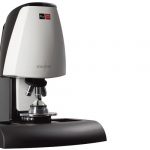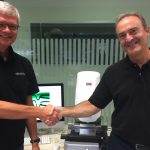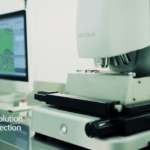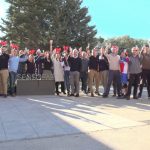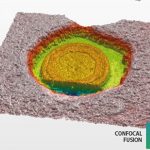Constantly moving forward
Sensofar R&D is constantly growing its know-how, technology and system capabilities. These developments are illustrated by Sensofar’s continued activity within and for the scientific metrology community.
Two papers will be presented at the upcoming SPIE Photonics West conference in San Francisco, USA that clearly demonstrate this involvement:
Jan 31, 3:50pm, Room 252, Paper 101110-6
Session 2: Metrology, Characterization, and Fabrication of Photonic Instruments
‘Optical stent inspection of surface texture and coating thickness‘
Presenter: Carlos Bermudez (R&D, PhD candidate)
Abstract. Stent quality control is a critical process. A high numerical aperture stent inspection system has been developed, composed by a rotary stage, a CMOS camera and a triple illumination arrangement. Unrolled sections of the outer, inner and sidewalls surfaces are obtained with high resolution. With this system, coatings thickness are also measured, cylinder-corrected and compared with spectroscopic reflectometry. In order to obtain fully focused 2D images, an extended depth of field algorithm combining different filtering techniques has been implemented and its performance evaluated with the CPU and the GPU processing of 2-Million pixel image acquisition at 50 frames per second.
Feb 1, 1:40pm, Room 252, Paper 10110-22
Session 5: Applications of Photonic Instruments III
‘Round Robin test on bio-imaging transfer standard for 3D optical profilers‘
Presenter: Roger Artigas (CTO)
Abstract. A stair case height Bio-Transfer-Standard (BTS), developed and produced at the University of Helsinki (UH), was measured in two laboratories. The Round Robin test aims to determine whether BTS works with different optical profilers in different laboratories. First the artefact was measured at UH using a custom-built Scanning White Light Interferometer. Then BTS was measured at Sensofar-Tech, S.L. using an S-neox-type interferometer working either in Phase Shifting Interferometry mode or in Imaging Confocal Microscopy mode. To remove the influence of system calibration, a method featuring sample shifting and measurement subtraction was used. The BTS features eight lipid bilayer steps that each are 4.6 ± 0.1 nm tall on average. All 30 measurements done by four different operators at the two laboratories agree to within 0.1 nm which agrees with theoretical estimates and with measurements done using a surface plasmon resonance technique. The Round Robin results show the applicability of the newly developed bio-imaging transfer standard for calibrating 3D optical profilers.
Abstracts as well as exact locations of the presentations can be found by utilising SPIE’s smart phone conference app.




